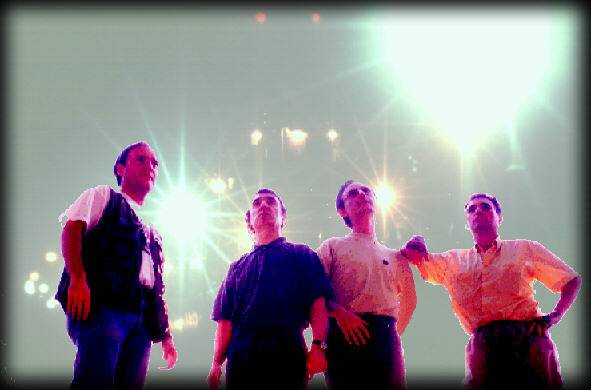
AT-MOOSS, A VOLCANO OF
ELECTRONIC MUSIC
By: Jorge Munnshe
The band At-Mooss create a powerful, imaginative electronic music. To this end, they utilize an uncommon amount and variety of technology, ranging from analog synthesizers to morphing techniques. They have not been scarce on means when it comes to shaping their artistic ideas, and thus their collective studio as well as that of each one of its members ressemble stores of synthesizers and musical equipment. Yet they not only have gathered devices, but also they know how to use them with enough mastery as to succeed in developing the diverse aspects of their artistic philosophy to the fullest potential.

The four members of At-Mooss are Joseph Loibant, Anthony Seagarr, John Lakveet and Dom F. Scab.
Joseph Loibant is the one to possess the widest musical trajectory, which includes having been a member of the techno band Programa, together with Carlos Guirao (ex-member of Neuronium) and Jose M. Ciria. As for his personal style, Loibant is the most eclectic member of the band. This is so due to the many trends he has dealt with during his trajectory as a musician, ranging from jazz to techno.
Dom F. Scab has recently released a solo album which has proved he is a brilliant composer, capable of dealing with unsurpassed skill the technological media available to him. By combining digital sonorities with analog ones, he knows how to shape a personal style of electronic music that links to the most thrilling essence of the cosmic sequencer music that so much enthusiasm awakened during the seventies to an audience wishing for new sensations, and that nowadays enthusiasms the new generations as well. His style, nevertheless, has several elements typical of the eighties and the nineties. He has been compared to the Tangerine Dream of the early eighties, yet even if it will appeal to those who enjoy the music this band used to make in that time, his music turns out to be completely personal.
Anthony Seagarr is the one who tends to the analogic most. His music fits the cosmic sequencer music done during the seventies and that many fans miss today perfectly. He has also been compared to Tangerine Dream, although in his case, unlike Dom F. Scab, not with the style of this band in the early eighties but rather that which characterized them in the mid seventies. That is to say, his music, even if it has his own personal imprint, will appeal to those who enjoy long passages dominated by complex aggressive sequencers and sinister melodies. Anyhow, it must also be taken into account the fact that his style has other aspects as well, even though all of them are within avantgarde electronic music.
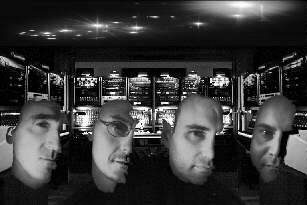
John Lakveet tends to Techno, yet in its most authentic form, just as it was conceived by the band Kraftwerk in the seventies. He has been compared to this band, although it has also been said that his music contains elements of electronic Jazz-Rock in the style of that of Jan Hammer's in "Miami Vice" or even Lalo Schifrin in his memorable soundtracks for action movies of the early seventies. Lakveet's compositions present nonetheless many other innovative traits of a purely personal make.
The band At-Mooss was founded by Joseph Loibant in the mid nineties, becoming known among the fans of electronic music with their album Morphing Synthesizers 1, released in 1995. That CD already turned out to be a nice surprise for electronic fans all over the world, specially in Spain, due to the greater projection of the band in this country, yet their second album Morphing Synthesizers 2, even surpassed their first. A greater risk, more emotion, high voltage electronic music. So much so that, as they themselves admitted, they had tried to "soften" the album because they feared it could come out too aggressive for the audience because they believed that it was saturated with brutal rhythms held by crazied sequencers and accompanied by feverish, hallucinating melodies. However, although part of their music is this way, many others of their compositions appeal to the fans of Synth-Pop, soft Ambient and Jazz-Rock.
Morphing Synthesizers is a trilogy that intends to be a sort of introduction to the audience, after which the band will be including more risky, experimental compositions in their new albums, though combined with pieces available to a wider audience. "The trilogy serves therefore to prepare the audience towards the more innovative part in our style."
In 1998, At-Mooss introduced themselves into the multimedia terrain as well, furthermore developing part of their activities in the internet. Most noteworthy was the performing of live concerts broadcast from their studio exclusively via video-conference in internet (ils.family.four11.com). In these concerts, the fans have been able to listen to Ambient-like improvisations combined with the performance of some of the themes in their albums, watching images treated with special effects where the members of the band appear playing their instruments.
Because of all this, At-Mooss was not only a revelation band in 1995-96, but also since then they have proved to be a band with a lasting, brilliant creativity. What's more, they are supported by a solid musical and technological education.
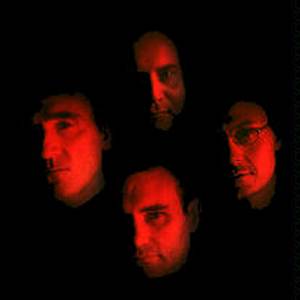
An important trait of At-Mooss is the fact that they don't choose to shape their individual styles into an homogeneous collective, but rather that they prefer to provide their works with as many artistic personalities as the number of members they are. Even though it is obvious that they have needed to adapt themselves to some common basis, they bet for the wealth provided by a variety of approaches. Thus, there are no collective compositions, but rather each album gathers several themes by each musician. On the other hand, in this way it also happens to be quite easy for the listener to find out what each artist contributes.
In the interview to the members of At-Mooss, I had the opportunity to get to know more about their history, their music, and their artistic views.
Joseph Loibant began in electronic music investigating the technical possibilities of synthesizers and experimenting with them: "After this time, I contacted Carlos Guirao, who had left the band Neuronium, and together we formed Programa, a Techno-oriented band. We had success. Nevertheless, I was not used to concert tours and public performances in general. This aspect was very different, and almost oppossed, to what I had had up to then, which was musical research and creation in a laboratory, what I liked best. And, wrongly enough, I did not devote myself to this as I should have. When we were beginning to become consolidated in the market, we left. In this I was partly guilty, as I preferred to continue researching, making advertising music and working in other things".
Years later, he had the idea of creating a band with a special arrangement: "When I created At-Mooss, I wanted to make a band where the musicians had very different styles and at the same time were able to cooperate, which was very difficult. For me it is important that each one of us does not make the same kind of music, because if we were identical, I think that our albums would sound monotonous, overwhelming. Having different styles, our music possesses more vitality, there is in it a creative spark of each one of us."
They do not intend to imitate anyone. They don't want that in their music there are too many connotations of a given musical genre, either. They try to avoid labels, and the only one they may accept is that of "electronic music": "We don't want to make fashionable music or purely commercial music. This is one of the premises in our artistic framework as a band".
Yet they do not hide the fact that their music has influences from the pioneers who have written important pages in the history of electronic music, such as for instance Vangelis, Tangerine Dream, Kraftwerk, Jean Michel Jarre, Klaus Schulze and Conrad Schnitzler, among others: "We believe that in our music a little of the history of electronic music can be perceived. We have drunk from all the sources and in a way we have joined them into our music, though we do not intend to make a compendium of the different styles, nor do we intend to imitate anyone."
They feel compelled to not limiting themselves to the composition of notes, but rather to spread their creative task to the timbres these notes sound with: "This is something that several new bands are now trying to do, using for example analog synthesizers. The danger there is in this, especially with analog synbthesizers, is the fact that, if the musician does not have enough experience, the sounds they create sound like childish rubbish, technological nonsense, and unfortunately there are several bands that suffer from this problem".
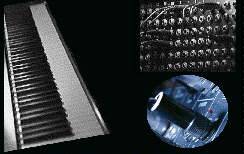
About what sort of electronic instruments are the ones they usually work with for their music, Loibant explains: "Since our trajectory as musicians, specially my own, dates back to several years ago, we use all the technologies, from the original analog, to the latest one, known as "morphing". Actually, the series Morphing Synthesizers is partly inspired in the morphing technique. What this technique does is to allow for the transformation of a sound into another one by means of intermediate forms. This leads to the appearance of unusual sounds. Anyway, I have no preferences towards any given type of synthesizers. I want all of them: analog, FM synthesis, digital, samplers, morphing... I don't want to despise the uses other instruments may not have. I am interested in being able to do everything I want."
Nonetheless, Loibant is perhaps the musician in At-Mooss who most values the possibilities of the work with digital synthesizers, partly because he has been working with the analog ones for years, and becoming despaired at their technical limitations and the slowness of the working process with them. Now, when we are experiencing a rebirth of the analog sound which is displacing the digital, it is interesting to know his opinions on this latter range: "Now the analog sound is adored and it looks as if everything should be done with these synthesizers, whereas the digital ones with FM synthesis have been utterly forgotten, and nevertheless these were precisely the ones that at one time displaced the analog ones. The general audience don't know that, for instance the Yamaha TX816, a model of which I own two devices, is very much used in the American movie soundtracks. Its sounds have a density and a power far superior to those of the analog ones, and happen to be very characteristic."
Anthony Seagarr explains his preferences in musical equipment: "For me, making music is like painting a picture. You need different colors, in this case different sound patterns. Analog synthesis, within the imperfection it has, is the one that in my opinion has more life, as each time you push a key with the same sound, it usually sounds in a different way, unlike the digital one, which always does so in a pre-determined manner. This is why I prefer analog synthesizers, provided they can be controlled with the sufficient efficiency."
Seagarr's personal approach to composing is more centered in a sequenced rhythmic style. An example of this is his theme "TSA57B" from Morphing Synthesizers 2, which is based on a most complex evolution of sequences: "To those who are not used to this kind of music, it may turn out to be too dense. On the contrary, for those who value the "sequential trance" so to speak, this piece will appeal to them."
John Lakveet is the one who feels most interested in samplers within the band.
At Dom F. Scab's studio there are all sorts of synthesizers, including analog ones such as a legendary Yamaha CS-80.
Anyhow, all of them have a strong interest in reaching the widest possible range of possibilities provided by musical technology. Loibant admits that despite the fact that they own all sorts of equipment, they continue to purchase the main novelties in the market, as "manufacturers always try to incorporate some function or capability into their new synthesizers that previous models do not have, so that any musician, no matter how well supplied he is as to his equipment, has a reason to buy this new device."
In general, the members of At-Mooss own many of the synthesizers that have played an important role in the history of electronic music, such as the PPG Wave 2.3, the Yamaha CS-80, the Roland JD-800, the Oberheim Xpander, or the Korg PS-3200 to name but a few, apart from others far older that ceased to be operational.
The musicians in At-Mooss have a solid professional trajectory. And even though none of them apart from Loibant have had a recording activity previous to At-Mooss, they do have more than enough experience as session musicians. This may be noticed in the first solo album by Dom F. Scab, Innerseed. The music is absolutely impressive, with a sophisticated elaboration that shows a complete mastery of the electronic medium and many hours of hard work. The degree of maturity in Innerseed is far superior to that of many musicians having several released albums, both in sound and in rhythm and melody. Unlike many artists, Dom does not conform hinself to a simple sonic structure integrated by more or less fixed instruments, but rather elaborates sonic elements that appear only during a few seconds. In this way, the music is performed by a wondrous electronic orchestra. Dom justifies this sonic wealth: "I like the fact that in my music unexpected things happen, that it is something alive, changing, hardly predictable."
In Innerseed, Dom has had the collaboration of Albert Giménez (ex-member of Neuronium) as a guitarist. The cover has been designed by Dom's brother, who is a comic books artist. The album is inspired on the idea of a machine with an organic inner part, alive. Innerseed is therefore, in a way, a sort of science fiction story on this theme, in a musical format.
Dom F. Scab began to study the piano at age ten. But the lessons ended up by boring him. His vocation as a musician was started when a friend of his (who, by the way, is not a musician), showed him a synthesizer: "My ears were completely open. And since then, synthesizers have fascinated me". Dom has composed music for the radio and cinema, and has also worked as a programmer of synthesizers on television, among other musical activities.
Joseph Loibant, the leader of At-Mooss, is becoming the center of an important recording activity within electronic music. Apart from the productions of At-Mooss, he is working on others, including the resurrection of the legendary band Programa, of which he was a founding member. The range in the styles of all these new productions includes Ambient, the most electronic sector of Techno and electronic music in general.
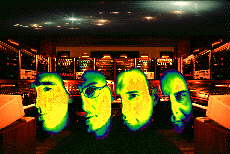
You can find more information in:
AT-MOOSS:
DOM F. SCAB:
If you wish to purchase any of their recordings you only have to click here